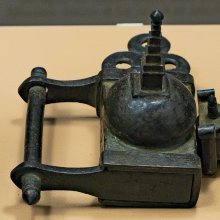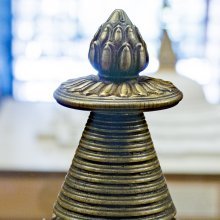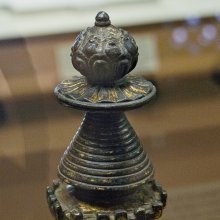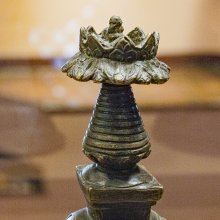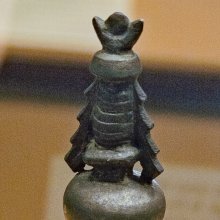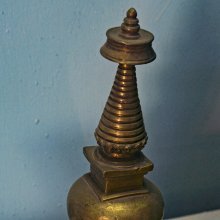Chorten, Chörten: 1 definition
Introduction:
Chorten means something in Buddhism, Pali. If you want to know the exact meaning, history, etymology or English translation of this term then check out the descriptions on this page. Add your comment or reference to a book if you want to contribute to this summary article.
Images (photo gallery)
(+16 more images available)
In Buddhism
Tibetan Buddhism (Vajrayana or tantric Buddhism)
Source: WikiPedia: Tibetan BuddhismChörten refers to a Tibetan structure which is usually white and shaped like an inverted bell and is placed on a raised, stepped base. The Chörten is the Tibetan Buddhist variant of the stupa or pagoda and is also found in other regions, such as Ladakh, Sikkim and Bhutan, however, the tradition of laying stones on top of each other in certain places has existed since ancient times. In a Chorten, both strands of tradition seem to have mixed. The top of the Chorten often forms an honorary umbrella (chatra/chhatra), from which cords with colorful prayer flags attached are often stretched in all directions, which are moved by the wind.

Tibetan Buddhism includes schools such as Nyingma, Kadampa, Kagyu and Gelug. Their primary canon of literature is divided in two broad categories: The Kangyur, which consists of Buddha’s words, and the Tengyur, which includes commentaries from various sources. Esotericism and tantra techniques (vajrayāna) are collected indepently.
See also (Relevant definitions)
Full-text: Stupa, Parishanda.
Relevant text
Search found 3 books and stories containing Chorten, Chörten; (plurals include: Chortens, Chörtens). You can also click to the full overview containing English textual excerpts. Below are direct links for the most relevant articles:
The Way of the White Clouds (by Anāgarika Lāma Govinda)
Chapter 11 - The Rock Monastery < [Part 1 - Three Visions]
Chapter 25 - Tulku < [Part 3 - Death and Rebirth]
Chapter 53 - Final Initiations < [Part 4 - Return to Western Tibet]
The Great Chariot (by Longchenpa)
The gods of northern Buddhism (by Alice Getty)
